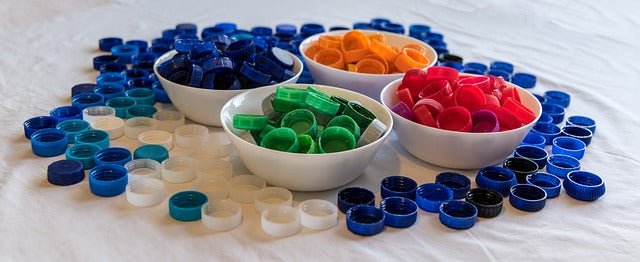
The ever-increasing plastic waste
Share
Plastic is a fast growing solid waste. Most of the plastic waste ends up in landfills (60% globally and about 75% in the US). Most of the plastic waste includes the items that are single-use products and have become an integral part of our daily lives.
About 300 million tons of plastic is produced worldwide every year (about 35.7 million tons in the U.S alone according to 2018 EPA data).
Almost all plastics are made from non-renewable sources
About 99% of all those plastics are produced from petroleum (oil, natural gas and coal). All of those are dirty non-renewable materials. Plastic bottles, food containers, freezer bags, grocery bags, food wraps, cutlery, plates and drink cups are among the most commonly used single-use throw-away items.
Where does all the plastic end up?
Well, here are the numbers (source: US EPA) about how all the plastic is being dealt with in the U.S.

Source: US EPA
Landfills receive the most of plastic
As the above chart shows, about 75% of all the plastic ends up in the landfills, intoxicating the natural environment.
A very little is recycled
We are doing a really poor job recycling and reusing those plastic items. Only 8.7% recycle rate in 2018. This is far away from having a sustainable life style.
None of that is compostable
Composting is a process of converting the materials back for natural use (e.g. plant food). Obviously, as the chart shows above, none of plastic items have been composted, and they cannot be.
Oceans receive a lot of plastic
From landfills, rivers carry a lot of plastic all the way to the oceans where it becomes dangerous for sea life. About 8 million tons of plastic ends up in world's oceans every year. Plastic, no matter where it ends up, can stay as is for centuries.
The small particles of plastic can be swallowed by fish and other farm animals who mistake them for food. This can end up in our dinner plates.
Plastic bags can create breeding grounds for mosquitoes and pests causing transmission of fatal diseases.
What can we do to respond to this?
Yes, the world is waking up and governments are starting to take action. But as the general population, we are the ones who can make the biggest difference (after all we are the ones who use and dispose the plastic).
Stay tuned to our next blog posts (RSS feed URL: https://goosavvy.com/blogs/news.atom) on making easy changes to our daily lives to either completely avoid plastic products, or use durable alternatives.
